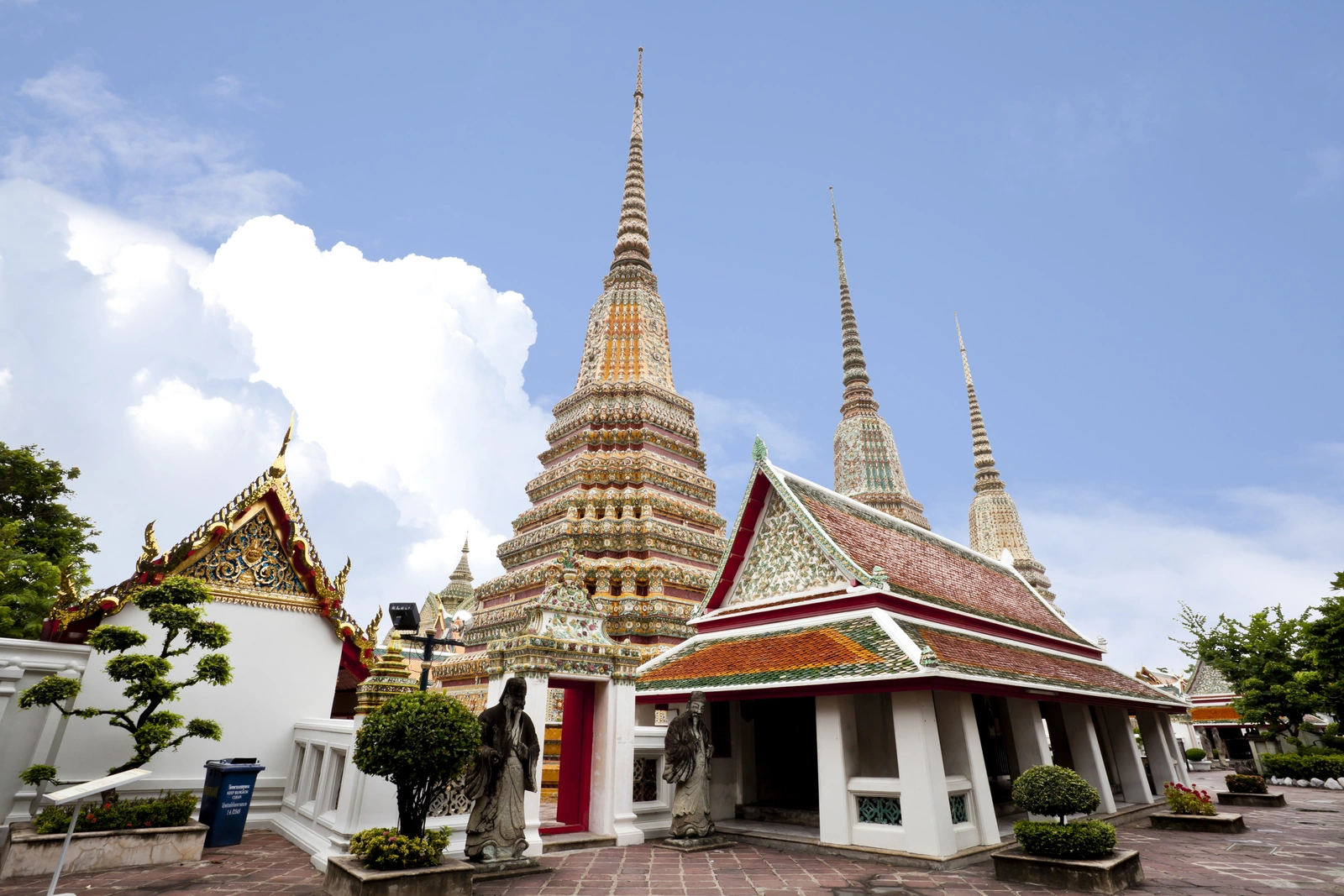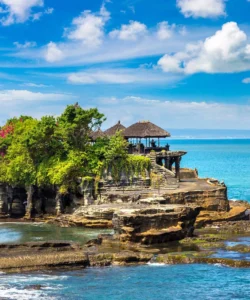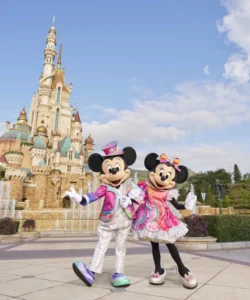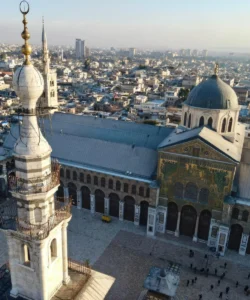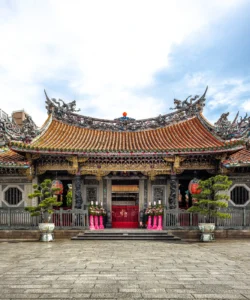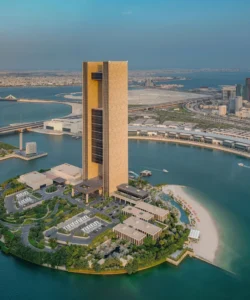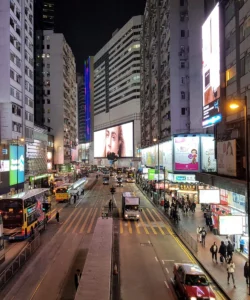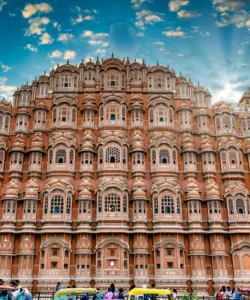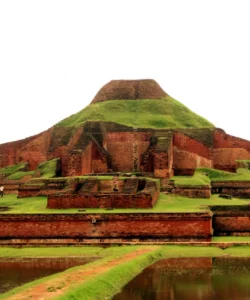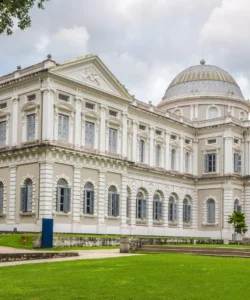Wat Pho (วัดโพธิ์), officially known as Wat Phra Chetuphon Wimon Mangkhalaram Rajwaramahawihan, is one of Bangkok’s oldest and largest temple complexes. Located immediately south of the Grand Palace, it is renowned for its colossal Reclining Buddha statue, its beautiful traditional Thai architecture, and its historical significance as the birthplace of traditional Thai massage. It offers a profound cultural and spiritual experience, providing a serene contrast to the bustling city.
![]()
Name: Wat Pho (วัดโพธิ์, meaning “Temple of the Reclining Buddha,” often also translated as “Temple of the Bodhi Tree”)
Address: 2 Sanam Chai Road, Phra Borom Maha Ratchawang, Phra Nakhon, Bangkok 10200, Thailand. It is situated on Rattanakosin Island, just a short walk from the Grand Palace and Wat Arun (across the river).
How to get there:
Wat Pho is easily accessible from central Bangkok and often combined with visits to the Grand Palace and Wat Arun:
- By MRT (Subway): Take the MRT Blue Line to Sanam Chai Station (สนามไชย, Exit 1). This exit leads directly to Museum Siam, and Wat Pho is a short, easy walk from there.
- By Bus: Numerous public bus routes stop near Wat Pho or the Grand Palace.
- By Taxi/Tuk-Tuk: Taxis and tuk-tuks are readily available. Insist on the meter for taxis or agree on a price for tuk-tuks beforehand.
Operating Hours and Entrance Fee:
- Operating Hours: Wat Pho is generally open daily from 8:00 AM to 6:30 PM.
- Entrance Fee: For foreign tourists, the entrance fee is typically 200 THB per person. Thai nationals can enter for free.
Landscape and Architecture:
Wat Pho is a vast and intricately designed temple complex, characterized by a unique blend of traditional Thai architecture and specific artistic elements:
- The Reclining Buddha (Phra Phuttha Saiyat): The absolute highlight. Housed in a dedicated viharn (assembly hall), this awe-inspiring 46-meter-long (151 ft) and 15-meter-high (49 ft) golden Buddha statue depicts Buddha attaining Nirvana. Its immense scale, serene expression, and the intricate mother-of-pearl inlay on its feet (depicting the 108 auspicious characteristics of the Buddha) are simply breathtaking. The hall is designed around the statue, allowing visitors to walk its length.
- Pagodas (Chedis): The complex is dotted with over 90 chedis (stupas/pagodas) of various sizes, many adorned with colorful ceramic tiles. Four massive, brightly colored chedis, dedicated to the first four kings of the Chakri Dynasty, are particularly prominent. These are adorned with intricate patterns in green, yellow, blue, and orange ceramic tiles, adding vibrant color to the skyline.
- Over 1,000 Buddha Images: Wat Pho is home to more than 1,000 Buddha images, collected from various abandoned temples across Thailand, making it one of the largest collections in the country. Many line the cloisters surrounding the main ordination hall.
- Phra Ubosot (Main Ordination Hall): This is the most sacred building in the complex, where important ceremonies are conducted. It features a triple-tiered roof and houses a magnificent Buddha image. The exterior is adorned with exquisite marble reliefs, and the interior boasts impressive murals.
- Traditional Thai Architecture: The various viharns, salas (pavilions), and cloisters showcase classic Thai temple architecture, with multi-tiered roofs, gilded gables, intricate wood carvings, and vibrant Dancheong (polychrome decorations).
- Courtyards and Gardens: The sprawling complex includes numerous courtyards, landscaped gardens, and fountains, providing space and tranquility between the various structures.
- Statues and Inscriptions: Throughout the temple grounds, you’ll find numerous stone statues (some with unique Chinese influences, possibly brought as ballast on trading ships) and engraved marble slabs, which once served as a public university for the common people.
What makes it famous:
Wat Pho is famous for:
- The Reclining Buddha: This colossal golden statue is one of the most iconic and frequently visited Buddha images in Thailand, renowned for its scale and beauty.
- Birthplace of Traditional Thai Massage: Wat Pho is considered the first public university of Thailand and the birthplace of traditional Thai massage (Nuad Thai). There’s a traditional Thai massage school within the temple grounds where visitors can receive authentic massages. It’s a UNESCO Intangible Cultural Heritage.
- Largest and Oldest Temple Complex (for a period): While not the oldest constantly used temple, its size and historical significance make it one of Bangkok’s most important and revered Buddhist sites.
- Rich Collection of Buddhist Art and Artifacts: With over a thousand Buddha images and intricate decorations, it’s a treasure trove of Thai Buddhist art.
- Stunning Chedis/Pagodas: The four massive, royal chedis are particularly distinctive with their vibrant, patterned ceramic tilework.
- Educational Significance: The temple’s role as a center for learning, particularly traditional medicine and massage, adds a unique educational dimension.
Differences from some other wonders:
Wat Pho distinguishes itself from other temples and architectural wonders in several profound ways:
- Dominance of the Reclining Buddha: While many temples have large Buddha statues, the colossal scale of the Reclining Buddha and its central role as the temple’s main draw is distinct. The entire viharn is built to contain and display this singular, monumental figure, creating an overwhelming sense of awe.
- Birthplace of Thai Massage: Its historical role as the originating school for traditional Thai massage, still actively practiced and taught on site, is a unique cultural and wellness aspect that sets it apart from purely religious or architectural sites. Visitors can experience this directly.
- “Public University” Concept: Its historical function as a place where commoners could learn various subjects (medicine, history, literature, even astronomy) from stone inscriptions makes it a pioneer in public education, a unique characteristic for a Buddhist temple.
- Specific Royal Chedis: The presence of four massive, elaborately decorated royal chedis (stupa-like monuments) dedicated to the first four Chakri kings is a specific architectural feature that contributes to its grandeur and historical importance, distinct from other temples that might have fewer or less ornate royal stupas.
- Contrast with Grand Palace & Wat Arun: While very close to the Grand Palace and Wat Arun, Wat Pho offers a different kind of architectural and spiritual experience. It’s less about the sheer, glittering gold of Wat Phra Kaeo and more about a vast, comprehensive complex with diverse forms, a unique central statue, and a focus on traditional knowledge. It provides a contrasting, yet complementary, view of Thai Buddhist heritage.
- Chinese Stone Guardians: The presence of numerous stone statues of Chinese figures (often scholars or military guards), brought as ballast on old trading ships, gives Wat Pho a unique artistic blend and a glimpse into historical trade routes, distinguishing it from temples with purely Thai or Hindu mythological guardians.
In essence, Wat Pho is a magnificent and multifaceted wonder, a spiritual sanctuary that houses an iconic Buddha, preserves the ancient art of Thai massage, and serves as a living testament to Thailand’s rich Buddhist heritage and scholarly traditions.
